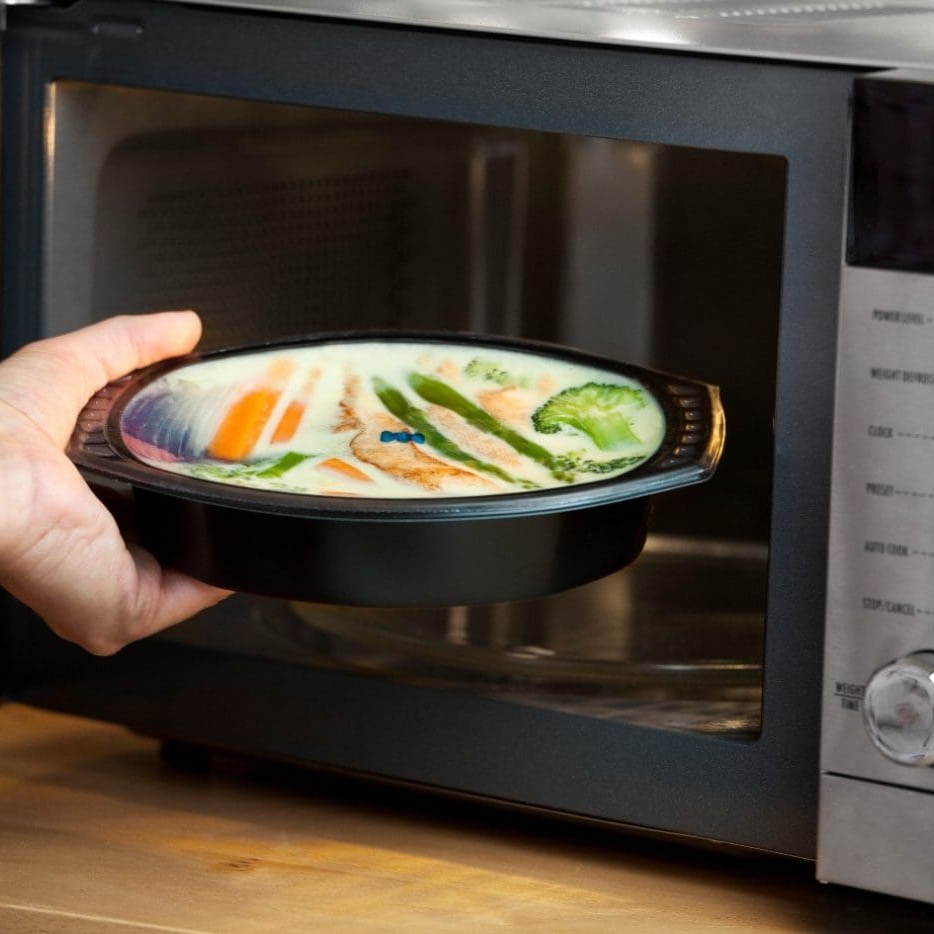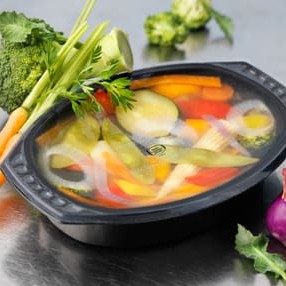New advances in packaging technology are delivering shelf-life on chilled microwave-ready heat-and-serve meal products out to as much as 45 days.
Scandinavian food technology company MicVac has developed a new vacuum packaging technology which allows cooked meal products to be stored in chilled form for an unheard-of 30-45 day duration, depending on the contents.
 The technology has significant implications for further-processed and value-added red meat items, particularly when used as part of a heat-and-serve meal product.
The technology has significant implications for further-processed and value-added red meat items, particularly when used as part of a heat-and-serve meal product.
Martin Bevis, senior process engineer with food processing design and engineering firm, Wiley, said in the supermarket ready-to-heat, pre-prepared meals section, consumers currently had the choice between frozen and chilled products.
The chilled pre-prepared meal generally commanded a premium consumer perception over the frozen range for several reasons, Mr Bevis said. These included:
- The freezing process can damage the product quality, such as rendering crisp vegetables into a mush when reheated.
- The factory freezing process will dehydrate the meal, and storage in a domestic freezer will continue to dehydrate it. This affects the final quality and eating experience.
The chilled product, on the other hand, has greater visual appeal on the supermarket shelf, as its display appearance is similar to the reheated meal, and the packaging is generally designed to show this off.
“The chilled meal is perceived as fresh and healthy, whereas that frozen dinner could be up to 12 months old,” Mr Bevis said.
The chilled product also commands a premium market price, and so its popularity amongst manufacturers is increasing.
The primary challenge for chilled ready-to heat meal manufacturers is the limited shelf-life of the product, requiring a flexible production process and slick logistics to optimise the time the product is present on supermarket shelves.
Two main methods are currently used to extend chilled pre-prepared meal shelf-life, while still retaining that ‘just made’ appeal:
- Pasteurisation, where the product is heated post-production to ensure sterility, offering a chilled shelf-life up to 14 days
- Modified Atmosphere Packaging (MAP) displaces air in a pack with inert CO2, nitrogen, or a mixture of both, delivering chilled shelf-life of up to 10 days.
“For retailers, wastage rates and discounts are high due to the pressure to sell within the products’ limited shelf-life, and the inevitable loss of any product that remains unsold once it has passed its use-by date,” Mr Bevis said.
New, higher-performing alternative
 Faced with these limitations in chilled shelf-life, a Scandinavian company has recently launched a process on the market which extends the shelf life of these meals out to 30-45 days, under industry-standard chilled storage conditions, while maintaining the quality of equivalent pasteurised products.
Faced with these limitations in chilled shelf-life, a Scandinavian company has recently launched a process on the market which extends the shelf life of these meals out to 30-45 days, under industry-standard chilled storage conditions, while maintaining the quality of equivalent pasteurised products.
The technology was invented in Sweden by a company called MicVac (www.micvac.com)
The MicVac process is designed to fully-cook the product in the plant, by the use of a continuous industrial microwave tunnel, instead of alternatives such as a spiral oven.
This renders segregated high risk/low risk divisions within the plant as unnecessary, as the raw ingredients can be assembled into the tray. The tray is then sealed and the contents fully cooked within the microwave tunnel.
“All product leaving the plant has therefore been fully cooked in the sealed tray, and is sterile,” Mr Bevis said. “The microwave oven provides a very rapid and thorough cook within a small footprint, the cooking performance of which cannot be matched by a spiral oven.”
“But this is more than just another microwave cooking technology. The clever part of the process is the patented MicVac one-way valve, which is attached to the film that seals the top of every meal.”
“This valve allows the cooking steam to escape from the pack during the rapid microwave cooking process, and therefore prevents the pack from exploding,” Mr Bevis said.
Once the meal is cooked the valve closes during cooling to ensure the pack remains fully-purged and no outside air is allowed back in.
“The novel, multi-purpose nature of this valve allows it to serve firstly as described above in the initial cooking process, then as a cooking tool for the consumer when they reheat the meal in their microwave,” he said.
Once heated, the MicVac valve emits a loud whistling noise to indicate that the meal is ready. This is due to the passage of hot steam through the valve, exactly as it occurred during the factory cooking process.
Micvac’s innovation was smart in more ways than just how it cooks and re-heats food, Mr Bevis said.
“The company makes and supplies a number of the unique elements of this new technology, all of which can be implemented into any standard ready-to-heat, pre-cooked meal manufacturing process.”
These features would be of great interest to the rest of the pre-cooked meal industry, he said.
The film that covers the meals and the valves are each supplied in roll-form by MicVac. A purpose-built module called a MVU (MicVac Valve Unit) is integrated into each existing tray-sealer and applies the valve and the seal whilst the sealer is running. MicVac manufacture the valves themselves to ensure they all meet the required quality standards.
The microwave tunnels are supplied and supported by MicVac from their Swedish base.
The special microwaveable ‘Flextray’ trays are manufactured under licence at various sites.
“Outside of these process particulars, any standard pre-prepared meals plant would already have the necessary equipment in use to manufacture this product,” Mr Bevis said.
A range of ready-to-heat meals products, including some based on beef, are already being manufactured and sold in one of Australia’s largest supermarket chains using the MicVac process.
Leading Japanese food processor Fujicco Co has also launched red meat-based meal products using the MicVac technology into the Japanese market, under Fujicco’s Oissina (Tasty) brand. The range is distributed through the thousands of Family Mart convenience stores and various supermarkets across Japan.
“The appeal of chilled ready meals is their quality and texture, and closer similarity to restaurant quality food,” Mr Bevis said.
“While there are other shelf-life-extending technologies which will take the product life well beyond six months, such as deep-freezing or retorting, products preserved using these methods cannot match the ‘fresh-like’ appeal of the chilled product and are proving hard to market to the consumer,” he said.
“The growth area in the supermarket aisles is in fresh and chilled foods. This sector is predicted to grow significantly over the next five years and will out-perform the overall growth in supermarket sales, displacing tinned, frozen and boxed foods from the shelves.”
“But retailers will be looking for ways to maximise their displays of chilled foods and reduce wastage in this high-margin sector. Extending shelf-life while maintaining quality is the sure-fire way of assuring a product ends up on enough shopping lists.”



HAVE YOUR SAY